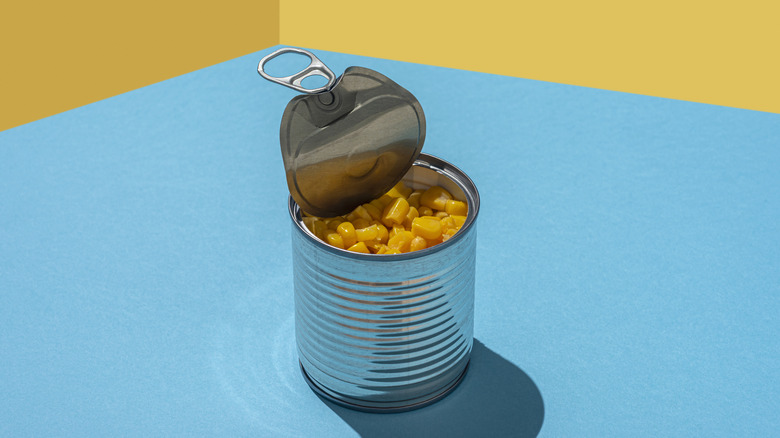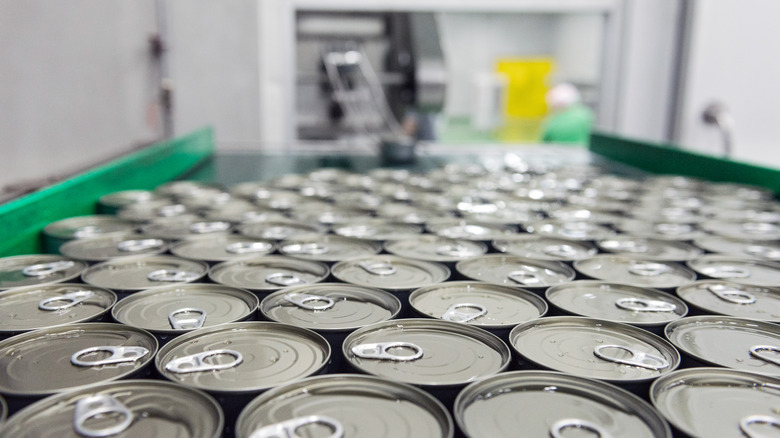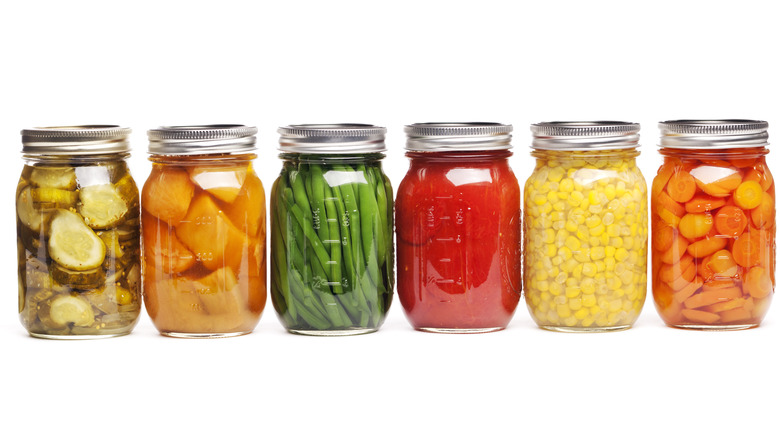Here's Why Canned Food Always Comes In A Ribbed Tin
You might think the ribbed design on canned food is just a quirky touch meant to make jellied cranberry sauce look more interesting, but it actually serves a crucial purpose. Those ridges, also known as corrugations, are essential for reinforcing the can's structure. If you've ever seen a bin full of crushed soda cans, you have already seen how easily a smooth-sided can crumples under pressure. In contrast, a ribbed soup can is much tougher to flatten. This is because the corrugated ridges add strength to the tin by creating a series of tiny arches along the surface. These in turn more evenly distribute pressure, similar to how the arches of a bridge help it carry heavy loads.
For another example, I was once part of a team-building exercise where we had to build a tower out of paper. Flat sheets collapsed quickly, but folding them into accordion shapes or rolling them into tubes made the structure much stronger. Similarly, ribbing in a can prevents it from denting or collapsing under pressure — so no unexpected bean explosions! But the ridges have another job that goes beyond just strength.
The ridges also help the can handle heat
In addition to making the can stronger, the ridges on a can help it withstand heat. During the canning process, the contents are sealed and then brought to high temperatures to kill off any bacteria, helping to ensure that the food inside stays safe to eat. This heating process causes the contents to expand, creating pressure within the can. The ribbed design allows the can to flex slightly under this pressure, accommodating the expansion without cracking or bursting open.
These ridges also help the can remain intact after it leaves the factory, when it might have to endure extreme temperatures during transport and storage. Whether in a hot warehouse or a cold delivery truck, the ridges help to keep the can secure, protecting the food inside until its expiration date — though that food might still be good long afterward.
This is especially important when you consider food safety. If a can develops an unseen dent or crack, it could compromise the seal, allowing bacteria to enter and making the food inside unsafe to eat. This trusty ribbed design is the result of more than a century of innovation that started with a container that wasn't even a can.
Before ribbed cans, food was stored in glass jars
In the early 19th century, food was stored in glass jars that were heated to high temperatures to kill bacteria and then sealed to keep the contents safe. This method was developed in response to a 1795 food preservation prize offered by Napoleon Bonaparte, who offered a reward to anyone who could create a reliable way to preserve food for his armies during their long campaigns.
One major problem: the glass jars were fragile and not practical for military use. The next big leap came in 1810 when English inventor Peter Durand developed tin-plated iron cans. These were far more durable and portable, making them ideal for wartime (a precursor to other long-term storage creations like canned bread, which was popular in World War II). However, opening these cans was a challenge. Before the invention of the can opener nearly 50 years later, people had to use tools like hammers and chisels to access the food inside.
Over time, the design of cans continued to evolve. including the innovated ribbed design. So, the next time you see those ribs on the cranberry sauce at Thanksgiving, be sure to impress your relatives with some obscure canning knowledge.


